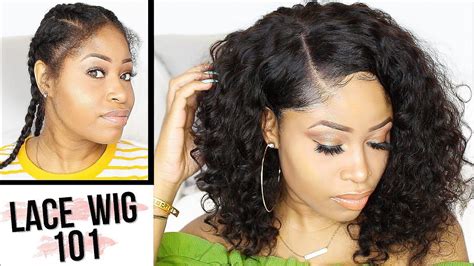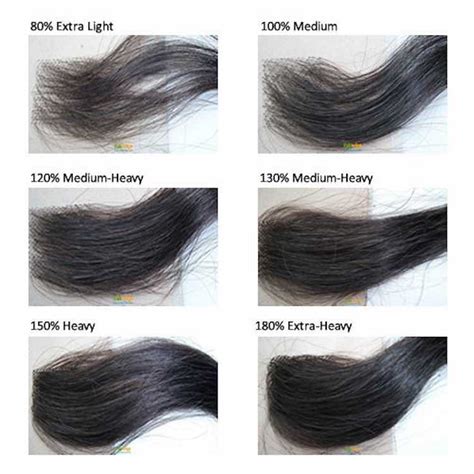What is a Light Density Lace Front Wig?
A light density lace front wig features a base with fewer knots per inch, resulting in a lower density of hair strands. This creates a more natural appearance, as it allows the wearer’s scalp to show through, mimicking the natural hair growth pattern.

Benefits of Light Density Lace Front Wigs
- Natural and Invisible: The low density allows the scalp to blend seamlessly with the wig, making it virtually undetectable.
- Comfortable: The reduced hair weight minimizes tension on the scalp, providing all-day comfort.
- Versatile: Light density wigs can be styled in various ways, from voluminous curls to sleek buns.
- Breathable: The open lace construction promotes air circulation, preventing discomfort and sweating.
- Perfect for Beginners: Light density wigs are ideal for first-time wig wearers as they require less maintenance and are more forgiving.
Density Variations
Light density lace front wigs come in different densities, ranging from 100% to 150%.
- 100-110% Density: Extremely sheer, almost invisible on the scalp. Perfect for everyday natural looks.
- 120-130% Density: Medium density, provides coverage while still allowing scalp to show through. Ideal for those seeking a balance of naturalness and volume.
- 140-150% Density: Slightly denser, offers more volume and opacity. Suitable for creating fuller, more dramatic hairstyles.
Choosing the Right Density
Selecting the appropriate density depends on personal preferences and desired appearance:
- Fine Hair: 100-110% density will blend seamlessly with your natural hair.
- Medium Hair: 120-130% density will provide a good balance of coverage and naturalness.
- Thick Hair: 140-150% density will conceal your natural hair and create a fuller look.
Maintenance and Care
Light density lace front wigs require special care to maintain their natural look:
- Wash and Condition: Wash every 7-10 days using a mild shampoo and conditioner designed for wigs. Avoid overwashing.
- Detangle: Use a wide-toothed comb or paddle brush to detangle gently while the wig is wet.
- Style: Use heat styling tools sparingly and at low temperatures. Always apply a heat protectant spray.
- Store: When not in use, store the wig on a wig stand or mannequin to prevent tangles.
Table 1: Light Density Lace Front Wig Density Comparison
| Density | Visibility | Volume | Scalp Exposure |
|---|---|---|---|
| 100% | Almost Invisible | Low | High |
| 120% | Medium | Medium | Moderate |
| 140% | Dense | High | Low |
Table 2: Benefits of Light Density Lace Front Wigs
| Benefit | Reason |
|---|---|
| Natural Appearance | Low density mimics natural scalp |
| Comfort | Lightweight, reduces scalp tension |
| Versatility | Can be styled various ways |
| Breathability | Open lace construction promotes air flow |
| Ideal for Beginners | Easy to maintain and forgiving |
Table 3: Maintenance Guidelines for Light Density Lace Front Wigs
| Task | Frequency |
|---|---|
| Washing | Every 7-10 days |
| Conditioning | Every 7-10 days |
| Detangling | While wet, use wide-toothed comb |
| Heat Styling | Minimally, with heat protection |
Table 4: FAQs About Light Density Lace Front Wigs
| Question | Answer |
|---|---|
| What density is best for fine hair? | 100-110% |
| Can I still wear my natural hair under a light density wig? | Yes, it blends seamlessly |
| How often should I wash my light density wig? | Every 7-10 days |
| Are light density wigs easy to maintain? | Yes, they require less upkeep |
| Is it okay to sleep in a light density wig? | Not recommended, as it can cause tangles |
Conclusion
Light density lace front wigs offer an unparalleled level of naturality and comfort. Whether you desire a sheer, barely-there look or a slightly denser, more voluminous style, there is a light density wig to suit your needs. By understanding the benefits, choosing the right density, and following proper maintenance guidelines, you can enjoy a stunning, undetectable wig that enhances your beauty and confidence.
Keywords for tags:
- Light Density Lace Front Wigs
- Natural Hairline
- Scalp Coverage
- Wig Density
- Wig Maintenance
